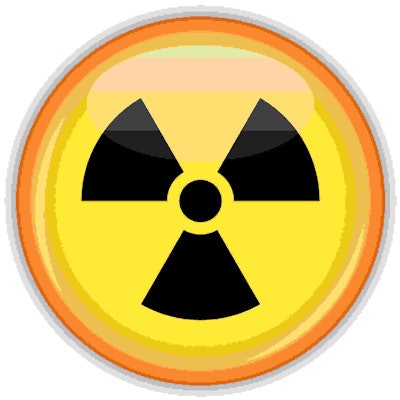
A woman's risk of radiation-induced cancer from regular screening mammography should be taken into consideration when assessing the performance of breast cancer screening programs, according to a study published in the August issue of Radiography.
Considering radiation risk is particularly important for programs that recommend screening starting at an earlier age and when it is conducted at more frequent intervals, wrote a team led by Raed Mohammed Kadhim M.Ali, PhD, of the University of Kufa in Iraq.
"The total effective risk should be considered for use as an additional parameter for the assessment of screening mammography program performance, especially for those programs which recommend an early onset and more frequent screening mammography," the group wrote.
The risk of radiation-induced cancer isn't usually included in mortality assessments of screening programs because it's considered to be low, Ali and colleagues wrote. Previous research has estimated that the total radiation dose for a screening mammogram with two views of each breast is about 0.4 mSv -- roughly equivalent to what a person receives over two months from background radiation. However, because there is limited information regarding this particular risk, the researchers conducted their study to assess it (Radiography, August 2018, Vol. 24:3, pp. 240-246).
Ali and colleagues used an adult dosimetry phantom to estimate radiation doses to multiple organs during standard screening with digital mammography. They then calculated the total effective lifetime risk of cancer across 48 national screening programs around the world. The group defined "effective risk" as the risk of radiation-induced cancer in all body tissues produced by exposure to x-rays for each year in women ages 25 to 75.
The study showed large variations in effective lifetime risk, ranging from 42.21 cases of cancer per 1 million women in the Maltese screening program to 1,099 cases per 1 million women in a U.S. program for high-risk women with more frequent screening. Most of the difference was due to the age at which each program starts screening, as well as the screening interval used. Data from selected countries are shown in the table below.
| Total effective risk of radiation-induced cancer in national breast screening programs | ||
| Country | No. of screens in program | Total effective risk (mean cancer cases per 1 million women) |
| Malta | 4 | 42.2 |
| U.K. | 9 | 70.8 |
| Belgium, Croatia, Cyprus, Denmark, Finland, Germany, Italy, Latvia, Lithuania, Luxembourg, Norway, Poland, Slovenia, Spain (Catalonia), Switzerland | 10 | 71.45 |
| Canada, France, Israel, the Netherlands | 13 | 74.1 |
| China | 7 | 122.8 |
| Australia, Japan, Korea, U.S. (AAFP, NCI, and USPSTF guidelines) | 18 | 193.9 |
| Sweden | 19 | 225.9 |
| U.S. (ACOG guidelines) | 31 | 260.3 |
| U.S. (ACS, ACR, and NCCN guidelines) | 36 | 372.4 |
While screening has been shown to reduce mortality from breast cancer by 15% to 20%, the radiation risk involved is not negligible, the researchers noted, and the study offers a method for calculating radiation risk to multiple organs.
"Compared to breast cancer mortality reduction by screening mammography, this radiation risk can be considered as extremely small but not zero," they concluded.



















